12 Types of Cracks in Concrete Slabs (With Pictures)
-
Jeff Weishaupt
- Last updated:
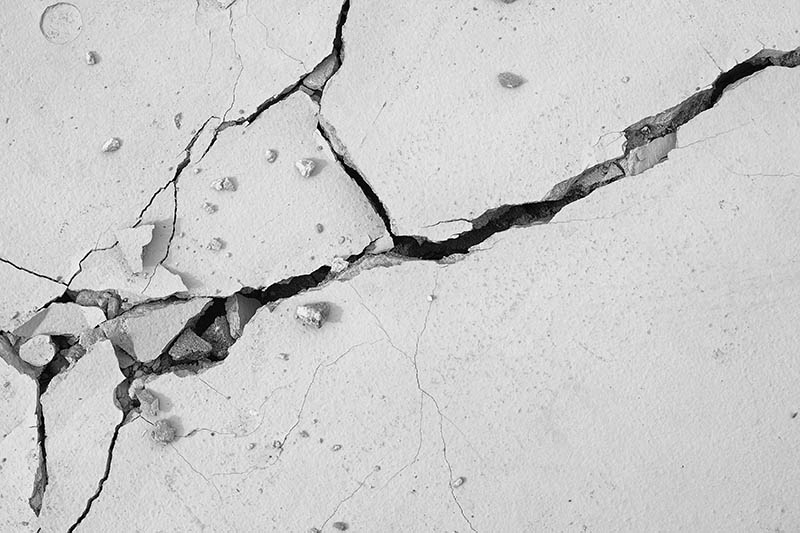
When pouring a concrete slab, it’s crucial to build a reliable foundation beforehand. Otherwise, you’ll deal with various types of splits in the slab. However, a lack of gravel foundation isn’t the only reason cracks can develop within concrete slabs.
Various causes can lead to forces building up within the concrete, causing cracks when the forces overshoot the concrete’s strength. You can easily recognize these causes as they have discernable signatures.
Here are 12 cracks that may develop in concrete slabs and their reasons.
The 12 Types of Cracks in Concrete Slabs
1. Diagonal Cracks

Diagonal cracks are typically spotted along the height of a reinforced concrete slab. Since these cracks affect the column’s entire face, they can damage the concrete slab’s integrity. Most of the time, an insufficient cross-section can cause diagonal cracks.
However, other reasons for this crack include inadequate steel reinforcement or the column’s load capacity. These cracks instantly compromise the structure’s strength, so you must address them as soon as possible.
2. Splitting Cracks
Short, parallel, and vertical cracks of varying widths are known as splitting cracks in a reinforced concrete slab. Columns with inadequate steel reinforcement or low-quality concrete are more vulnerable to splitting cracks.
If the concrete slab is reinforced, it most likely surpasses its maximum load capacity, causing splitting cracks. This can occur due to an insufficient reinforcement ratio, inadequate cross-section, or both.
In large amounts, these cracks shatter your concrete’s foundation entirely, so it’s best to address them at the first signs.
3. Horizontal Cracks

You may also note horizontal cracks in a reinforced concrete slab at the beam-column junction. If the tensile stress is high, such cracks can even develop on the column face. Insufficient reinforcements and moment of resistance capacity cause these cracks.
Besides that, columns with an incorrect arrangement of installed reinforcement are also prone to horizontal cracks. This may occur due to shear force, direct load, or uniaxial bending.
Horizontal cracks can drastically reduce the column’s shear strength. As a result, they compromise the entire structure, leading to future safety risks.
4. Corrosion Cracks
It’s important to watch for corrosion cracks next to the reinforcement lines on the concrete slab’s column. These cracks typically have symmetrical widths, only widening as the concrete ages.
Corrosion cracks are typically caused by reinforcement corrosion in the concrete or deficient bonds between the steel bars and concrete. Such cracks only worsen with time, so it’s best not to waste time before addressing them.
5. Plastic Shrinkage Cracks
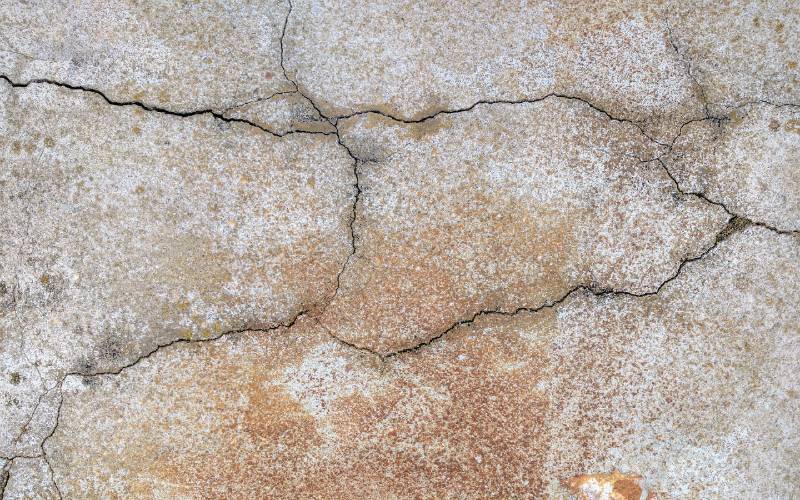
Before hardening, concrete is said to still be in its plastic state. In this stage, the concrete is prone to plastic shrinkage cracks since it still holds a great amount of water. Once this water dries, it leaves air bubbles within the concrete slab.
Such air bubbles weaken the concrete’s structure and leave it vulnerable to plastic shrinkage cracks. You can expect these cracks anywhere on the concrete slab. But they’re especially common where two corners meet into the slab, known as the reentrant corners.
6. Expansion Cracks
Like most materials, concrete slabs expand when heated, pushing against anything that confines it. When the concrete cannot flex or bend under heat, it will develop expansion cracks.
Most concrete finishers use expansion joints as isolation points between static objects as a solution. These joints are typically made of compressible materials, such as rubber, lumber, or asphalt.
When the concrete begins to expand due to heat, expansion joints absorb the shock and relieve its stress, preventing cracks in the long run.
7. Hairline Cracks
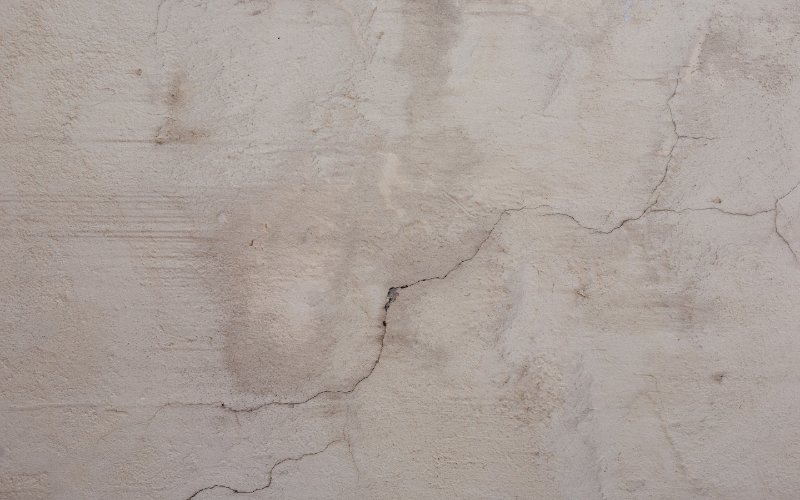
Concrete slabs are most vulnerable to hairline cracks while still in the curing stage. While these cracks aren’t detrimental to the concrete slab’s foundation, they may cause leakage issues down the line.
If you notice hairline cracks forming shortly after pouring your concrete foundation, it’s probable that you poured the mixture too quickly or didn’t mix it correctly. These cracks typically appear in the wall’s center, as the corners are stabler, especially in poured concrete bases.
8. Overloaded Slab Cracks
Like any material, concrete has its limits, even if it can withhold heavy weights. Placing excessive weight on the concrete slab can cause large cracks detrimental to its entire structure.
This is much likelier during or after snowmelt or heavy rain. The excessive weight pushes the concrete down on the wet and soft ground, causing it to break. Preventing these cracks is as simple as remembering the concrete’s PSI before placing weights.
9. Heaving Cracks
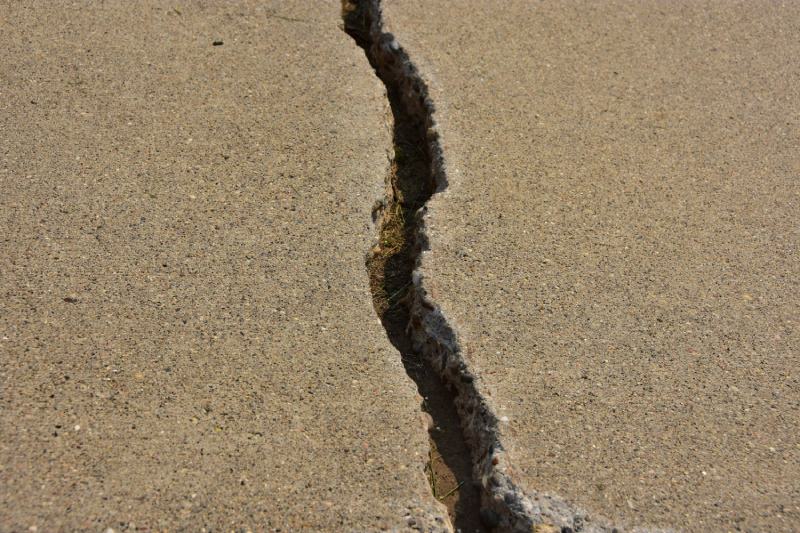
Heaving cracks typically occur during colder seasons when the concrete freezes and thaws repeatedly. Once the concrete slab freezes, you may note it lifts a few inches before it thaws and settles on the ground.
A repeated freezing and thawing pattern can lead to heaving cracks within the concrete slab. You can prevent such cracks by giving the slab enough space to move freely with the ground.
It’s also best not to place your concrete slabs too close to a growing tree, as the sprouting roots can crack the concrete slab by lifting it.
10. Settlement Cracks
Concrete slabs may be more vulnerable to settlement cracks due to improper subsoil consistency or inappropriate preparation of the underlying ground. They most commonly appear over uneven subgrade soil areas after pouring the concrete.
It’s worth noting that the concrete’s base “bends” over one point, which allows for differential settlement. As a result, these cracks are more sizable on their starting point than on their end. As a result, you may note them occurring multiple times on one wall.
11. Premature Drying Cracks
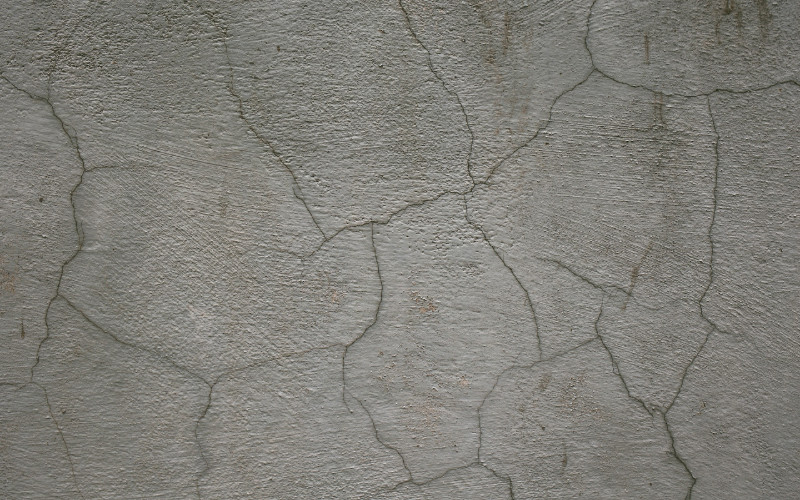
Premature drying can cause two types of cracks in your concrete slab: crusting cracks and crazing cracks.
Crusting cracks appear during stamping when the slab top dries faster than the bottom on windy or sunny days. As a result, the concrete slab top becomes crusted and creates small cracks once the slab is stamped.
On the other hand, crazing cracks are recognizable due to their shattered glass or spider web appearance. These fine cracks appear when the slab top loses moisture too quickly, but they’re not a structural concern.
12. Structural Cracks
Most of the time, horizontal settlement or loading can lead to structural cracks in a residential concrete foundation. Other times, these cracks may appear due to applied load. That includes heavy equipment around the foundation wall or extreme hydrostatic pressure.
As a result, structural cracks are almost always horizontal in 16- to 48-inch lengths from the wall’s starting point. Block foundation walls are more vulnerable to structural cracks than other bases.
Conclusion
Sometimes, knowing what caused a certain crack may be challenging. While most of these cracks aren’t great causes of concern, it’s best to stay on the lookout for these signatures and maintain the integrity of your concrete slab.
Featured Image Credit: fluke samed, Shutterstock
Contents
